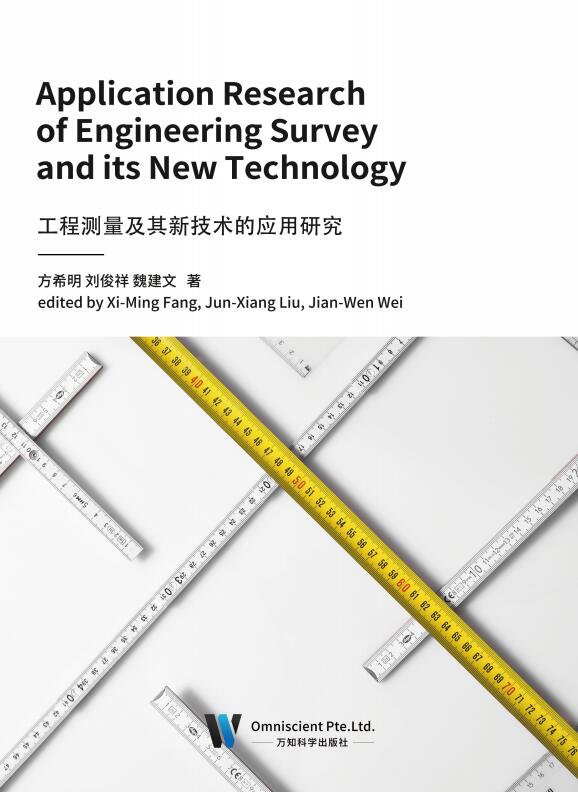
随着信息技术发展与运用的逐步深入,市政工程建设单位在信息化工作方面得 到显著的进展。初步实现了基于网络的办公系统与流程。但因为信息化还不够彻底, 依然难以完全避免纸质文件的传递和处理。因为办公事务牵涉面广,流程复杂,市政工程建设单位内部文件运转至今仍然沿用文件基本信息计算机登记与手工交换相 结合的模式。由于文件的运转过程现有系统难以准确跟踪,无法高效地查找跟踪重 要文件,已经无法适应市政工程建设单位日益增多的信息星处理要求。为了改变市 政工程建设单位工作效率,改善各种业务手工处理的现状,亟需构建一个基于 Web 应用的自动化系统,实现机构事务的信息化管理。
市政工程质星管理作为重要的基础理论在市政施工企业中运用已有多年的历 史了。但是现在市政施工企业在项目管理中还存在着许多问题,尤其是项目质量管 理问题,这些问题的存在严重困扰着市政公用事业的发展。
本书的工作包括:对整个系统的功能需求进行具体分析,阐述了系统的构建规 则以及系统的设计模式。在市政工程项目管理信息系统的详细设计中,对系统的重 点模块给出了分别从表示层、业务层、服务层、数据访问层、数据库层介绍了系统 使用的是层次化结构,阐述了具体层次的划分,以及网络服务方法级的访问控制。 在市政工程项目管理信息系统模块的实现中,阐述了怎样应用框架到市政工程项目 管理信息系统的模块,对系统进行详细设计,以及系统的具体实现。本书从而全面 地阐述了工程的项目管理体系,对市政公路项目管理控制具有积极的借鉴意义。

公共管理思潮全球化蔓延并深深影响中国的学术研究。处于转型期的中国是公 共管理实践和思想相对落后的国家,许多问题的解决都寄希望于公共管理理论的发 展和成熟。公共管理学作为一门新兴学科,在中国的发展方兴未艾。中国的行政改 革实践和行政理论的发展,促使大批行政学、管理学方面的专家、学者对公共管理 进行研究。
人类具备鲜明的群体性特征,而群体的聚集最终产生凌驾于社会大众之上的公 共权力。公共权力无论是通过暴力手段获得的,或是以代表广大人民执行权力的, 都应该纳入一定的群体性协调当中,这种协调就是公共管理。
随着中国改革开放的不断深入,中国的公共管理面对着更为复杂的外在环境和 内在机理规律,加强分析中国的公共管理理论研究的前沿问题具有重大现实意义。 改革开放以后,西方公共管理理论的大量涌入,受到了学者们的普遍重视,极大地 推动了我国公共管理学的学科建设。经过近三十年的不懈努力,我国公共管理学研 究取得巨大的历史性进步,逐步成长为一个独立的研究领域,同时缩小了与西方发 达国家研究的差距。

河流是流水作用形成的主要地貌类型,汇集和接纳地面径流和地下径流,沟通 内陆和大海,是自然界物质循环和能量流动的一个重要通途,人们常常把河流看作 地球动脉川。河流生态系统的形成和演变,是经过漫长的岁月才比较稳定的,水生 生态伴随着湿地生态并极大的影响到两岸的陆地生态。如一条典型河流,从横断面 看,组成上就有河岸、河底、主槽、滩地、湖泊、洪泛平原等。它不仅是水的载体, 通过水位涨落变化、补充地下、滋润两岸土地等形式提供各种生态服务:而且水陆 交错,或依山傍水,或河湖相连,生境丰富,物种繁多,在生物多样性发生与养育 上极富特点。
但是随着人口增长、工业进步和社会发展,土地利用需求快速增加,河流流域 亦受到过度开发,为解决治山防洪及河道整治问题,往往施以拦沙坝或混凝土河堤 等各项工程,造成不透水域扩大,水面与绿地减少,进而破坏了河流生态系统与景 观,使人们因而丧失了亲水空间,降低了生活的品质。河流生态问题已不容忽视,
所以保护河流生态是目前人们非常关注的问题。河流生态系统自身内部具有一套完 整的信息、物质、能量循环机制,同时它也不是独立于周围环境的,而是与其他生 态系统之间也存在着物质、能量、信息交换。其中与陆地生态系统的相互作用最为 显著,水体的很多生物的物质和能量源都来之于陆地生态系统。而两者之间主要是 通过河岸带相互作用的,河岸带将两者紧密地联系起来,它是河流生态系统与陆地 生态系统进行物质、能量、信息交换的一个重要过渡带,成为两者间相互作用的重 要纽带和桥梁。如河岸带上的植被对水陆生态系统间的物流、能流、信息流和生物 流等发挥着廊道、过滤器和屏障作用功能。河岸带作为一种生态交错带,由于受到 河水的强烈影响,具有明显的边缘效应,其植物群落组成、结构和分布格局以及生 态环境因子等与远离河流的森林内部的植物群落相比有着较大的差异。河岸带生态 系统对增加动植物物种种源、提高生物多样性和生态系统生产力、进行水土污染治 理和保护、稳定河岸、调节微气候和美化环境、开展旅游活动均有着重要的现实意 义和潜在价值。 所以保持河岸带生态系统的生态平衡、生态安全、生态健康,对维持河流生态 系统的生态功能,保护河流生态具有十分重要的意义和价值。

房屋建筑工程专业基础知识是一门综合性很强的专业基础课,为增强从业者的职业能力,培养高素质的专门人才,使从业者经过培训可以上岗,本书的编写力求提高从业者职业技能以适应企业的需求。本书在编写风格上着重贯彻了以下几点。第一,理论与实务有机结合起来,融合穿插编排,建立新的体系。以岗位所需知识和能力为主线,保证内容的系统性和完整性,注重理论联系实际。第二,新颖性。全新的体系和全新的编写理念,打破了传统的模式,采用最新的法规政策,内容具有先进性,实用性和适度的超前性,并请企业人员审稿,以努力与当前工程实践相结合。第三,可操作性强,注重能力的培养。本书侧重于应用能力的培养,列举了大量工程图例,具有较强的实用性,并且结合能力目标,以必需、够用为原则。第四,综合性强。本书的内容包括了建筑材料,建筑识图与构造、力学与结构,建筑施工与管理,建筑工程法规及相关知识,使从业者经过培训后便可以上岗就业。
本书内容翔实、结构清晰、编撰体例新颖,在理论与实例相结合的基础上,注重
应用理解,以更大限度地满足造价工作者实际工作的需要,增加了图书的适用性和使
用范围,提高了使用效果。本书根据房屋建筑施工行业对所需基础知识的要求,结合
行业岗位标准进行编写、主要作为房屋建筑工程专业技术管理人员岗位培训用书,也
可供建设行业专业技术人员自学使用。

随着我国现代化科学技术步伐的快速发展,比较特殊、重要的工程对工程测量 技术提出了全新且高层次的要求,只有在建筑工程项目中采取准确测量的方法才可 能确保工程项目在设计和施工项目中的质量保证。电子信息科学技术的不断提升为 开发工程测量新技术提供了新的技术方式和手段。各种新型建筑和新建项目的建设 为工程测量技术的快速发展奠定了基础。在广度和深度上现代工程测量新技术都取 得了长远的进步。工程测量新技术方法也在不断地从早期的旧方法更新到目前的数 字遥感技术,以及复杂工程测量项目的三维立体测量的开发,随着信息时代的发展 进步,我国工程测量的新技术正不断地更新测量方法,以便推动我国的现代化工程 建设步伐。
工程测量技术在工程建设中发挥着重要作用,传统的工程测量技术具有操作难 度大、测量强度高以及测量时间长等缺陷。随着科技的不断进步,现代工程测量技 术更加成熟和完善,促进了工程测量精度的提高。现代工程对质量要求越来越严格, 工程测量技术为工程施工提供详实的数据参考。进一步改进和完善工程测量技术, 不断提升工程测量技术的精确性,才能为工程建设提供更加坚强的技术保障。